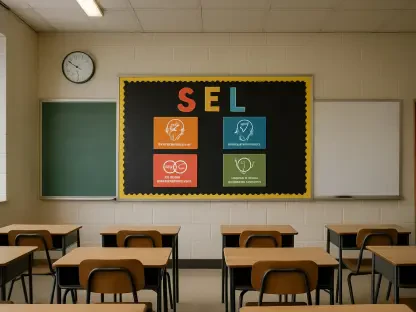In Florida, a perplexing dichotomy persists between the reported excellence in school ratings and the sobering truth of student performance levels. This juxtaposition is brought to the forefront by an analysis of recent data released by the state’s Department of Education, which reveals a complex picture of so-called “successful” schools overshadowed by a significant portion of underperforming students. Despite the fact that over 40% of students show difficulties in meeting expected competencies in key areas such as reading and math, schools maintain commendable ratings, with nearly 71% of institutions receiving “A” or “B” grades. This scenario prompts a critical examination of how school performance is evaluated and the apparent disconnect that emerges between these evaluations and actual student achievement. Such analysis highlights a critical discourse on the efficacy of current educational metrics and their impact on educational priorities.
The Ratings Paradox: Examining Florida’s Educational Metrics
Florida’s educational framework seems at odds with itself, as demonstrated by the contradiction between school ratings and student performance levels. While school ratings are ostensibly reflective of institutional competence, they do not necessarily align with the academic success of individual students. This dissonance is exemplified by data showing that more than 40% of students fall below expectations in fundamental subjects like reading and math. Nevertheless, these students are enrolled in schools that achieve high ratings based on a mixed set of criteria, including learning improvements rather than mastery of core subjects. The implication here is that the state’s grading system might prioritize indicators of progress rather than ensuring full comprehension, which does not adequately address gaps in student learning.
Hillsborough County serves as a case study for this paradox. Despite showing proficiency rates in elementary reading below the state average and lagging in elementary math, the county also experienced an uptick in “A” and “B” rated schools. This situation raises questions about the real metrics at play in the grading system. The ratings overlook critical areas where students struggle to achieve basic competencies, such as third-grade reading and fifth-grade math. In doing so, this may give a misleading depiction of school quality and, consequently, the preparedness of students for future academic challenges. It emphasizes the need for a reassessment of educational priorities that highlight true comprehension and ability over simply achieving institutional accolades.
Contributing Factors and Potential Solutions
The ongoing disparity between student achievement and school ratings can be traced to several underlying issues within Florida’s education system. One such issue is teacher shortages, which have been impacting the quality of education provided. In response, districts like Hillsborough are actively working to mitigate these shortages by employing funds from locally approved taxes to attract and retain qualified teachers. Additionally, initiatives aimed at enhancing reading skills are being implemented, such as new phonics-based programs and expanded access to pre-kindergarten education. These efforts are designed to bridge educational gaps at an early stage, yet they require sustained focus and resources to be truly effective.
Moreover, the role of community involvement is underscored as a vital component in addressing these educational challenges. Parental engagement and support from the business sector can significantly contribute to creating a nurturing environment conducive to learning. In particular, the alignment of educational outcomes with tangible workforce needs should guide schools in crafting curricula that better prepare students for post-academic success. This holistic approach underscores the necessity of stakeholder collaboration in fostering an educational climate that prioritizes student readiness above institutional rankings.
The Path Forward: Reevaluating Evaluation Criteria
Florida’s education framework seems to contradict itself, highlighted by the gap between school ratings and student performance. School ratings indicate institutional competence but don’t align with actual student achievements. This inconsistency is shown by data revealing over 40% of students perform below expectations in essential subjects like reading and math. Yet, these students attend highly-rated schools based on criteria that focus on learning improvements rather than the mastery of core subjects. Consequently, the grading system might value progression indicators more than true understanding, failing to address student learning gaps.
Hillsborough County exemplifies this paradox; despite lower proficiency in elementary reading and math compared to state averages, the area saw a rise in “A” and “B” rated schools. This scenario questions the metrics used for grading, which neglect crucial areas where students struggle, such as third-grade reading and fifth-grade math. This could misrepresent school quality and students’ readiness for future academic challenges, highlighting the need to reassess priorities to emphasize true comprehension over institutional recognition.









